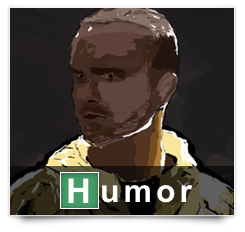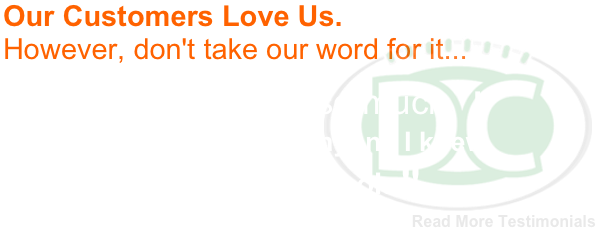As elementary as it sounds, making good trades is all about buying low and selling high. You know this, right? Well, maybe you think you do, but let’s be honest, all of us are subject to chasing after our favorite players and sometimes we send out offers for those players even when the price tags don’t suggest value. It doesn’t make you a bad owner, it just means that in these situations it was hard to separate business from pleasure.
What I’m saying is, most of you likely understand buying low and selling high, it’s not rocket science by any means, but having the discipline to only accept good offers, and to only send out good offers, it’s easier said than done, at least on a consistent basis.
Even if you are a 10 year fantasy football veteran, I urge you to continue reading this article, as it may remind you how easy it is to fall into fantasy football Value Traps when it comes to trading.
The Basic Concept: Max Value Trading
Again, the concept of buying low and selling high is quite simple, but let’s redefine the concept right now. By properly buying low and selling high, you’re essentially getting max value on all ends of all of your trades… so, let’s call this kind of trading Max Value Trading. If you’re selling, you’re getting max value, or you don’t sell. It’s that simple on the sell side. And, on the buying side, you buy-low and get max value (so, you’re getting max upside), or you don’t buy. It’s also that simple on the buy side. Easy enough? Sure, however, it’s easier said than done, and that’s what this article is about. Earlier I mentioned the term Value Trap as it relates to fantasy football; this is essentially when a fantasy owner invests in a player at the wrong time, and getting stuck with a player that wasn’t actually a good value at the time of the acquisition. This is a perfect example of how to not get max value in trades.
Understanding The Struggle
So if buying low and selling high in order to get max value is so simple, what is the struggle? Why do we, and I include myself, sell-low on certain players and buy-high on others? Well, sometimes it’s as simple as missing out on a certain player during a fantasy draft, then later overpaying in order to acquire that player. Or, let’s say you doubted a player like Adrian Peterson after his ACL tear, then he explodes like he did during his first season back from injury. His value is soaring right now, so going after him now wouldn’t be a good move, as you’d be paying max dollar value, and where’s the upside in that? Other times it’s a bit more complicated, so let’s take a look at some other bad trading habits:
-
Don’t Telegraph Your Trades
What is Trade Telegraphing? It’s rather simple when you think about it. Just like a quarterback shouldn’t telegraph his passes so that defenders know where those passes are going, fantasy owners shouldn’t develop reputations for acquiring the same players every year, or in every league. If you develop a reputation like this, it makes you an easy target for other fantasy owners, as everyone knows that you are willing to pay max-dollar for certain players. You’re not going to gain max value in any scenario if you telegraph your favorite players across all leagues and formats. Is it fun to own your favorite players? Sure. Is it more fun to win fantasy football championships? Also, drafting the same players in multiple leagues is not wise; it’s smart to mix-up your fantasy rosters across all your leagues, this way a single injury doesn’t take out all four or five of your fantasy football seasons.
-
Don’t “Panic Trade”
Busting out some psychology on you, think of it like this… Why is it that individuals from divorced families sometimes struggle with commitment, or at least often struggle with abandonment issues? Well, it’s because they have been impacted a bit from the abandonment feelings that were generated through their childhood-experienced divorce. Translate that over to fantasy football for a second. If you have been burned by injuries in the past, or burned by believing in a quick riser that rapidly fell flat on his face a season later (ie, Chris Johnson), well, then you might be susceptible to allowing those past experiences to influence your future decision-making. It’s only natural, but it’s often not a good thing. Here is another example: Many dynasty fantasy owners all over the place have recently been discussing the idea of trading Robert Griffin III in fear that he may drop off in production next season. This is assuming the worst, which is just a product of Panic Trading. Many fantasy owners prematurely panic in fear that the high-flying wave will come crashing down on them. It’s only natural to wonder about such things, and it’s all kinds of wise to investigate why some players have recently emerged… are they One-Year Wonders? Are their teams on the decline? These are all good questions. Players decline, it happens. Questioning that isn’t wrong, it’s actually solid-thinking. However, wanting to trade RG3 because you feel he could slump much like Cam Newton did in early 2012, that’s just connecting dots that aren’t even on the same page. That’s Panic Trading without tangible evidence. So, what’s the solution? Only trade off players that are on fire if you have a tangible reason for a potential decline. And, even if you decide to just go ahead and make a speculative call regarding a player’s decline, just ensure that you are selling high, this way even if you’re wrong, at least you liquidate every drop of fantasy value that the player you traded away commanded. Then you just have to hope that the player that you reinvested in doesn’t have more concerns than the player you just speculatively traded away.
-
Don’t Trade Just For Youth
This is probably the biggest mistake dynasty league owners make. Many dynasty league owners get so caught up on acquiring only youth, they make trades that sacrifice immediate fantasy scoring because they gain a couple youthful years down the road. An example would be where a fantasy owner trades in a Ray Rice (who will be 26 heading into 2013) for a Trent Richardson (who will be 22 heading into 2013). Given that running backs can either play through about 29 at a high level, or just as easily have only a couple of elite seasons before droping off the face of the earth, it makes little sense to get caught up on 2-, 3-, or even 4-year age difference… if the older player that you’re contemplating trading away is proven and at least a couple years away from the dreaded running back age of 30, why trade? There is zero reason to think that Ray Rice can’t play at an elite level just as long as Trent Richardson… meaning, there is a chance that both runners decline at the same exact time, even despite the age difference. Don’t get me wrong, incorporating youth into your drafting strategy, that’s not a bad thing, but chasing youth is one of the biggest reasons a team ends up always fighting for second place vs. landing a championship trophy.
Only Send Out Offers Heavily In Your Favor
While sending out dreadfully-bad offers isn’t recommended, as you don’t want to burn bridges, or isolate yourself from your league mates, the whole point in making a trade is to win the deal. I am not advising that you offend people, however, walk the line to the point where any deal you send out is either a big win for your roster, or it’s rejected. So, essentially you capitalize in a big way, or you don’t trade. Why would anyone accept an offer that is heavily in your favor? Proceed to the next paragraph!
Send Out Offers In Waves
The real key to making a good trade really boils down to the paragraph above, which advises that you only send out offers that are greatly in your favor. However, the key to making that strategy work is sending out massive amounts of trade offers. Because these trade offers are constructed to be greatly in your favor (in your mind), most (if not all in some scenarios) will be rejected. Therefore, sending out waves of them increases the odds of you landing that one unlikely trade… and all it takes is landing just one trade that’s heavily in your favor and you could instantly turn your team into the kind of team that has people asking, “how did you acquire that team?” I can’t stress enough that you need to walk that fine line between sending out equal offers and offers that will turn out to be heavily in your favor. I know what you’re asking yourself: Why would anyone accept a bad offer? Well, answer this question… have you ever accepted a bad offer, one you regretted beyond belief even hours or seconds after you made the deal? Odds are you’ve accepted a handful of those over the course of your fantasy football career, and again, that’s all you’re after. Get one person to accept one of your handfuls and handfuls of offers. It’s in the numbers and you’re playing the probability game.
Conclusion
All in all, everything you have just read is not likely new information. Meaning, you have likely heard bits and pieces of all this stuff at some point, and you may have all kinds of understanding around these topics and strategies in your home and work environments. My goal with this article was to really bring it all together in one reading; looking at all this as a whole, and from the top level down, should help you better stay disciplined during your next trade frenzy.





Excellent article Smitty…
I for one was in a trading discussion in my dynasty league for over a month trying to acquire AJ Green.
The owner wanted Andrew Luck (I still had Stafford/Peyton), Trent Richardson (I still had A Foster, CJ Spiller, Ridley, Leshoure and B Tate) and Mike Williams (I still had Calvin Johnson, Hakeem Nicks, and Kenny Britt).
I would have fell victim to what Smitty mentioned in his article; I was going to trade THE WORLD to get a player at his max value. I came to my senses and declined.
I did however still acquire AJG. I traded Arian Foster and Mike Williams for Green and a 4th round pick, which is the first round my league can acquire free agents (I will be able to draft either Shorts, D Alexander, C Kaepernick, B Brown, B Myers, T.Y. Hilton or J Edelman).
Some might say Foster is way too much to give up, but similar to what Smitty mentioned, Foster is a player that I am predicting to lose value soon. Foster has been getting a tremendous amount of carries this season; plus additional carries in the upcoming playoffs. The shelf life of a RB is a lot less than a WR. Having a young group of RBs (Richardson, Spiller, Ridley, Leshoure, Tate) made it easier for me to let go of Foster.
Thanks, Troy! Keep up the active trading. Always go with your gut. If you doubt Foster, by all means, trading into an AJ Green was no downgrade. Trading into a 2nd round RB and a bunch of crap just because you fear a Foster injury, that’s panic trading. You clearly didn’t do that. You did some lateral trading, into a player you feel looks equal, but isn’t (and the advantage you feel will be on your side).. that’s how you keep a dynasty alive and keep it strong. Nice work.
Love it Smitty!! Some great trading advice.